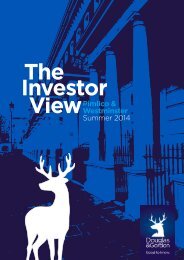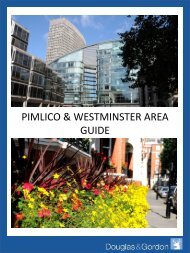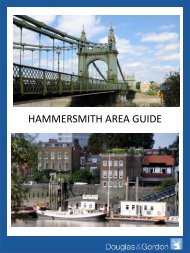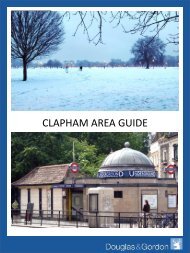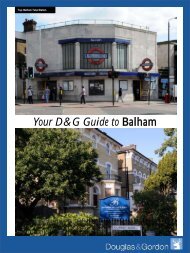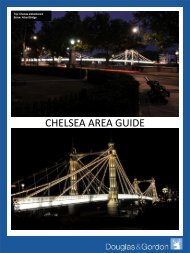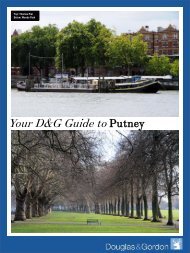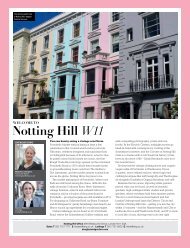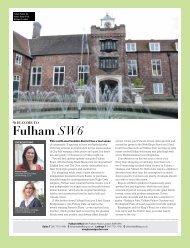Bridge Magazine - Part 1
OUR HOME, YOUR LONDON FROM DOUGLAS
OUR HOME, YOUR LONDON FROM DOUGLAS
You also want an ePaper? Increase the reach of your titles
YUMPU automatically turns print PDFs into web optimized ePapers that Google loves.
In the summer of 1929, the residents<br />
of rutland gate would, upon peering down<br />
through their elegant sash windows, have<br />
been aghast. for in the street below, a motley<br />
crew of mostly twentysomethings had begun<br />
to assemble in varying states of disarray, lured<br />
to this pocket of south kensington for one of<br />
rosemary sanders’ parties.<br />
while this tableau might have been an<br />
all-too-familiar feature of what we have<br />
retrospectively come to term as the “roaring<br />
twenties”, more unusual was the mode of<br />
transport by which the revellers arrived. they<br />
came in prams and baby carriages, and their<br />
dress, far from couture, was more befitting of<br />
the nursery. what the neighbours would not<br />
have glimpsed – no doubt to their eternal relief<br />
– was that once out of gaze, the merrymakers<br />
were provided with an assortment of dolls and<br />
bottles, props to be frolicked with inside adultsized<br />
playpens, while the nursery beakers<br />
contained not so much milk as gin.<br />
so far, so fetish, but this was not, contrary<br />
to appearances, a gathering of oddballs on<br />
the fringes of society. the party was attended<br />
by such well-known scene-dwellers as the<br />
actress brenda dean paul,<br />
along with some of the<br />
best-connected and most<br />
louche-living aristocrats of<br />
this, the Jazz Age. for this<br />
was the notorious second<br />
childhood party, and the<br />
determinedly frivolous<br />
set of attendees were, as<br />
they were labelled by the<br />
incredulous yet transfixed<br />
press at the time, the<br />
bright young people.<br />
but if the second<br />
childhood party attracted<br />
disapproval, it was<br />
hardly the first of its kind<br />
to do so. if anything, the<br />
quickly bored bright<br />
young people (in whose<br />
studiedly flippant parlance,<br />
much was deemed “too,<br />
too tiresome”) saw it<br />
as marking a decline<br />
in the ingenuity of their<br />
legendary japes. its<br />
attendees considered it<br />
an asininely deliberate<br />
attempt at the kind of<br />
American actress<br />
and bonne vivante<br />
Tallulah Bankhead<br />
Flapper on the cover<br />
of Life in 1926<br />
FEATURE<br />
parties which had<br />
previously defined their<br />
movement.<br />
it was on precisely 26<br />
July 1924 that the set made<br />
its debut in the eyes of The Daily<br />
Mail and its readers. the paper’s<br />
headline announced them unambiguously<br />
with the words: “midnight chase in london.<br />
50 motorcars. the bright young people”;<br />
they were thence set to be near permanently<br />
present within its pages for the next few years.<br />
the group that came into startling focus on<br />
this day in 1924 was a band of young society<br />
people who, up until then, would have been<br />
habitués of the more formal coming-out balls.<br />
now they ran amok on the streets of the capital<br />
in a sort of drunken treasure hunt, which<br />
culminated in breakfast at norfolk house, st<br />
James’s. the heady mélange of celebrity –<br />
including the American star tallulah bankhead<br />
– with glamorous aristocrats made for the stuff of<br />
instant legend, particularly amid the landscape<br />
BRIdGE MAGAZINE 31




